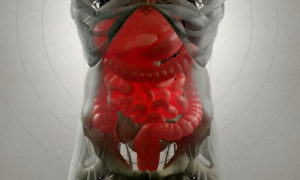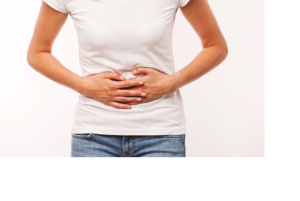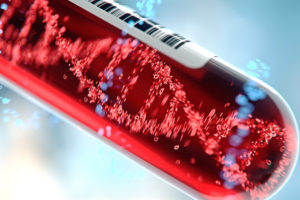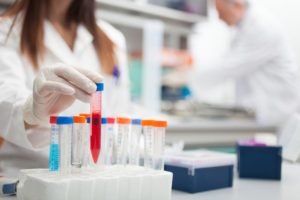Crohn’s Disease Serum & Plasma Samples
Bay Biosciences provides high-quality, biopsy tissue samples. FFPE tissue blocks with matching fresh, frozen sera (serum), plasma, peripheral blood mononuclear cells (PBMC) bio-fluids from patients diagnosed with Crohn’s disease.
The sera (serum), plasma and PBMC biofluid specimens are processed from Crohn’s disease patient’s peripheral whole-blood using customized collection and processing protocols.
The biopsy tissue and matched biofluid samples are collected from unique patients diagnosed with Crohn’s disease and are provided to a valued pharmaceutical customer for research, diagnostics, discovery and drug development.
Crohn’s disease, sera (serum), plasma and peripheral blood mononuclear cells (PBMC) biofluids are processed from patients peripheral whole-blood using customized collection and processing protocols.

Crohn’s Disease Overview
Crohn’s disease is long-lasting (chronic) auto-immune mediated inflammatory disease that can affect any portion of the gastrointestinal (GI) tract, from the mouth to the anus. It most often affects the intestinal walls, particularly in the lower part of the small intestine (the ileum) and portions of the large intestine (the colon).
The disease primarily involves the intestinal system, but it also has a variety of extra-intestinal manifestations and can affect the skin, joints, bones, eyes, kidney, and liver.
The symptoms of Crohn’s disease include intestinal ulcers, discomfort, and pain.
Difference between Crohn’s Disease and Ulcerative Colitis
While Crohn’s disease and ulcerative colitis are both Inflammatory Bowel Disease (IBD’s), they are two different diseases.
Crohn’s disease can affect any part of the digestive tract, including the esophagus, stomach, small intestine, and large intestine, also known as colon. Ulcerative colitis, on the other hand, develops solely in the colon.
Another major differentiating factor is the depth of inflammation that affects the intestinal walls. In Crohn’s disease, it is transmural, meaning it’s a full thickness inflammation that involves all layers of the intestinal wall. By contrast, ulcerative colitis involves primarily the top layer, known as the mucosal layer.
Moreover, in Crohn’s disease, a patient’s bowels can have healthy sections in between the diseased parts. In ulcerative colitis, however, the damage appears in a continuous pattern.
Crohn’s disease pain may differ from that typical of other gastric diseases, such as irritable bowel syndrome (IBS). Although similar, Crohn’s disease and IBS differ in some ways. A patient with IBS may have diarrhea, abdominal pain, and constipation. In contrast, a patient with IBS will not show any signs of colon inflammation.
Signs and Symptoms of Crohn’s Disease
Symptoms of Crohn’s disease vary depending on which part of the gut the condition affects. Patients with Crohn’s disease can have severe symptoms, followed by periods of no symptoms that may last for weeks or years. The symptoms depend on where the disease happens and how severe it is They often include:
- Pain: The level of pain varies between individuals and depends on where the inflammation is in the gut. Most commonly, the patient will experience pain in the lower right side of the abdomen.
- Ulcers in the gut: These are raw areas in the gut that may bleed. If this happens, the patient may notice blood in their stools.
- Mouth ulcers: These are a common symptom.
- Diarrhea: This can range from mild to severe. Sometimes, there may be mucus, blood, or pus. The patient may feel the urge to have a bowel movement but find that nothing comes out.
- Fatigue: Patients with Crohn’s disease often feel very tired. Fever is also possible during fatigue.
- Altered appetite: At times, a person may notice loss of a appetite.
- Unexplained Weight Loss: This can result from a loss of appetite.
- Anemia: A loss of blood can lead to anemia.
- Rectal bleeding and anal fissures: The skin of the anus becomes cracked, leading to pain and bleeding.
Other possible symptoms of a Crohn’s disease flare include:
- Arthritis
- Delayed growth and sexual development in children
- Liver or bile duct inflammation
- Skin rash
- Uveitis
Types of Crohn’s Disease
There are five types of Crohn’s disease, and each affects a different part of the gastrointestinal or GI tract:
- Ileocolitis: This is the most common type of Crohn’s disease. It affects the small and large intestines. Symptoms include diarrhea, unexplained weight loss, and pain in the lower and middle abdomen.
- Ileitis: This form of the condition only affects the small intestine. The symptoms are the same as in ileocolitis, but a person with a severe case could develop fistulas or an inflammatory abscess.
- Gastroduodenal Crohn’s disease: This affects the stomach and the beginning of the small intestine. Symptoms may include nausea, vomiting, loss of appetite, and unexplained weight loss.
- Jejunoileitis: This causes spots of inflammation in the upper portion of the small intestine, called jejunum. Symptoms include abdominal cramping after meals, diarrhea, and, in severe cases, fistulas.
- Crohn’s colitis: This only affects the colon. Symptoms may include diarrhea, rectal bleeding, disease around the anus, such as ulcers, fistulas, and abscesses, joint pain, and skin lesions.

Causes of Crohn’s Disease
Exact causes of why Crohn’s disease develops is unknown. Scientists think of it as an auto-immune disease. Experts suggest it may stem from an abnormal reaction in the immune system.
Research suggests that the long-term inflammation may not happen because your immune system attacks your body, but instead because it attacks a harmless virus, bacteria, or food in your gut.
Following are some of the factors that may increase the risk of inflammation:
- Environmental Factors
- Genetic Factors
- Patients Immune System
- Smoking
A bacterium or virus may also play a role. For example, research suggests there is a link between the bacterium Escherichia coli and Crohn’s disease.
Risk Factors of Crohn’s Disease
Following are some of the known risk factors which increases the risk of developing Crohn’s disease:
- Genes: Crohn’s disease is often inherited. About 20% of people who have it may have a close relative with either Crohn’s or ulcerative colitis. In addition, Ashkenazi Jews have a higher risk of developing Crohn’s disease.
- Age: While Crohn’s disease can affect people of all ages, it’s primarily an illness of the young. Most patients are diagnosed before age 30, but the disease can happen in people in their 50s, 60s, 70s, or even later in life.
- Smoking: This is the one risk factor that’s easy to control. Smoking can make Crohn’s more severe and raise the odds that you’ll need surgery.
- Medications: Nonsteroidal anti-inflammatory drugs (NSAIDs) like ibuprofen, naproxen, and similar medications don’t cause Crohn’s disease, but they can lead to inflammation of the bowels that makes it worse.
- Environment: People who live in urban areas or industrialized countries are more likely to get Crohn’s.
- Diet: People who eat a lot of high-fat or processed foods, their chances of developing Crohn’s could go up.
- Infection: Bacteria linked to Crohn’s include Mycobacterium aviumpara-tuberculosis, which causes a similar condition in cattle, and a type of E. coli.
Diagnosis of Crohn’s Disease
Doctors use several different tests to distinguish Crohn’s disease from other conditions like ulcerative colitis. A doctor will ask a person about any signs and symptoms. A physical examination may reveal a lump in the abdomen resulting from when loops of inflamed bowels become stuck together.
Following are some of the tests performed to diagnose Crohn’s disease:
- Blood tests including blood counts (CBC).
- Stool samples to rule out infections as the cause of diarrhea.
- Biopsy.
- Imaging Tests:
- MRI tests: This shows your doctor a clear picture of the inside of your body without using radiation.
- CT scan: This test uses X-rays to make detailed images of your internal organs.
- Endoscopy: Your doctor might send you to a specialist called a gastroenterologist to get one of the following tests:
- Balloon-assisted enteroscopy: This test uses balloons that inflate and deflate to pull a flexible tube called an endoscope through your small intestine. A tiny camera on one end gives a view of the inside of your guts.
- Capsule endoscopy: You’ll swallow a tiny, pill-sized camera to give the doctor a closer look at your small intestine.
- Upper endoscopy: The doctor does this to see your esophagus, stomach, and duodenum.
- Colonoscopy or sigmoidoscopy . These give the doctor a clear picture of your intestines and let them obtain a tissue sample for further study and pathology analysis.
Complications of Crohn’s Disease
Crohn’s disease can causes two types of complications:
- Local, which affect just your intestines
- Systemic, which affect your whole body or extra-intestinal complications.
Local complications of Crohn’s include the following:
- Abscess: This pocket of pus happens because of bacterial infections. It can form on the walls of the intestines and bulge out. Or the patient might get one near the anus that looks like a boil. The patient will notice swelling, tenderness, pain, and fever.
- Bile Salt Diarrhea: Crohn’s disease most often affects the ileum, the lower end of the intestine. This part usually absorbs bile acids, which the body makes to help it absorb fat. If your body can’t process the fat, you could get this type of diarrhea.
- Fissure: Fissure is a painful tear in the lining of the anus. It can cause bleeding during bowel movements.
- Fistula: Sores or ulcers can turn into openings called fistulas that connect two parts of the intestine. They can also tunnel into nearby tissues, like the skin, bladder and vagina.
- Malabsorption and malnutrition: Crohn’s disease affects the small intestine, the part of the body that absorbs nutrients from food. Patients who have had Crohn’s disease for a long time, their body may no longer be able make the most of what they eat.
- Small intestinal bacterial overgrowth (SIBO): The human gut is full of bacteria that help you break down food. In SIBO happens higher up in the digestive tract than usual, you can get gas, bloating, belly pain and diarrhea.
- Strictures: These narrowed, thickened areas of your intestines result from the inflammation that comes with Crohn’s. They can be mild or severe, depending on how much of your intestine is blocked. Symptoms include cramping, abdominal pain, and bloating.
Systemic complications include the following:
Arthritis: Joint inflammation, which leads to pain, swelling, and a lack of flexibility, is the most common systemic complication.
Three types of arthritis sometimes come with Crohn’s disease:
- Peripheral Arthritis: This type of arthritis affects large joints in your arms and legs, like your ankles elbows, knees and wrists.
- Axial Arthritis: This type of arthritis affects the patients spine or lower back (sacroiliac joint).
- Ankylosing spondylitis: This more serious type of spinal arthritis is rare among patients with Crohn’s disease, but it can happen. It can also lead to inflammation in the eyes, heart valves and the lungs.Skin Problems: These are the second most common systemic complication. Those most often linked to Crohn’s disease include:
- Erythema nodosum: These small, tender, red nodules usually show up on your shins, ankles, and sometimes arms.
- Pyoderma gangrenosum. These pus-filled sores often follow an injury or other skin trauma. They often appear on your legs but can show up anywhere.
- Skin Tags: These small flaps of skin are common in people with Crohn’s, especially around the anus.
- Mouth Ulcers: These are also known as canker sores. These form between the gum and lower lip or along the sides and bottom of the tongue.
Bone Loss: Medications like steroids can lead to bone loss a condition known as osteoporosis.
They can:
- Stop your body from absorbing calcium, which it needs to develop bones
- Make your body get rid of calcium when you urinate
- Boost production of cells that break down bone
- Lower the number of cells that help form bones
- Lower your body’s output of estrogen. Estrogen also helps build bone.
The proteins that cause inflammation can also change the speed at which your body removes and makes bone.
- Lack of vitamin D: If you body is unable to absorb vitamin-D because of Crohn’s damage to the small intestine, or if part of your small intestine has been removed, you’re less likely to be able to absorb calcium and make bone.Eye problems: Inflammation associated with Crohn’s can affect the eyes in several ways. Common conditions include:
- Episcleritis: Inflammation of the area just below the conjunctiva (the clear tissue that covers the inside of your eyelids and the white of your eye) is the most common complication of Crohn’s disease. It can affect one eye or both eyes. You’ll notice pain, itching, burning, and severe redness, but it won’t typically hurt your vision.
- Scleritis: This condition causes constant pain that gets worse when you move your eyes.
- Uveitis: This is a painful inflammation of the uvea, the middle layer of your eye It can cause blurry vision, light sensitivity and redness.
- Kidney Stones: Kidney stones are a common problem with Crohn’s disease patients. One type occurs when a salt called oxalate gets absorbed into the kidneys and turns into stones. Another type, called uric acid stones, forms if your body cannot absorb all the uric acid that it makes.
- Hydronephrosis: This happens when the ileum (where the small intestine meets the large) swells from Crohn’s disease and puts pressure on a ureter, the tube that carries urine from your kidney to your bladder. When urine cannot drain as it should, the kidney swells, and scar tissue can form.
- Fistulas: In addition to forming within the intestines, fistulas can also form between the intestine and other organs, like the ureter or bladder.
Liver Problems: The liver processes everything a person eats and drink. It can get inflamed as a result of Crohn’s disease treatment or the Crohn’s disease itself. You’re likely to have only low energy and fatigue unless you get a more serious problem.
Following are the most common liver problems that develop in Crohn’s disease patients:
- Fatty Liver Disease: When your body doesn’t process fats as well, they can build up in your liver.
- Gallstones: When Crohn’s affects the ileum, it can’t process bile salts, which help cholesterol dissolve. The cholesterol can form stones that block the opening between your liver and the bile duct.
- Hepatitis: Long-term liver inflammation can result from Crohn’s disease itself.
- Pancreatitis: Inflammation of the pancreas can result from both gallstones and medications. It can cause fever, pain, nausea and vomiting.
- Growth failure: Kids who have Crohn’s are likely to be shorter and weigh less than those who don’t. They may stop getting taller before symptoms start.
- Delayed puberty: Kids with Crohn’s are likely to start puberty later.
Treatment of Crohn’s Disease
There is no known cure for Crohn’s disease, but some treatments can help by reducing the number of times a person experiences recurrences. Treatment for Crohn’s disease may involve medication, surgery, and nutritional supplements. Usually the aim is to control inflammation, resolve nutritional problems, and relieve symptoms.
Crohn’s disease treatment will depend on some of the following factors:
- Complications of the condition
- Where the inflammation occurs
- Severity of the disease
- Patient’s response to previous treatment for recurring symptoms
Some Crohn’s disease patients can have long periods, even years, without any symptoms. Experts refer to this as remission. However, there will usually be recurrences.
As periods of remission vary greatly, it can be hard to know how effective treatment has been. It is impossible to predict how long a period of remission is going to be.
Medication
Following are some of the medications used for the treatment of Crohn’s disease:
- Anti-inflammatory drugs: A doctor will most likely start with mesalamine, which helps control inflammation.
- Steroids: These may include oral steroids, such as prednisone and Entocort, or intravenous steroids, such as SoluMedrol.
- Antibiotics: This type of medication can be useful in Crohn’s disease flare-ups if a person has an abscess or fistula.
- Anti-diarrheal drugs and fluid replacements: When the inflammation subsides, diarrhea usually becomes less severe. However, sometimes a person may still need something to address diarrhea and abdominal pain.
Biologics
Biologics are a type of drug that scientists have developed from a living organism. Biologics reduce the body’s immune response by targeting proteins that lead to inflammation. They appear to help patients with Crohn’s disease.
Following are some of the examples of biologics medication:
- Anti-tumor necrosis factor agents, such as adalimumab (Humira), certolizumab pegol (Cimzia) and infliximab (Remicade).
- Integrin receptor antagonists, such as vedolizumab (Entyvio)
- Anti-interleukin-12 and interleukin-23 therapy, which may include ustekinumab (Stelara)
- Anti-Janus kinase 1, such as tofacitinib (Xeljanz)
Examples of biologics for Crohn’s disease include:
- infliximab (Remicade)
- adalimumab (Humira)
- certolizumab pegol (Cimzia)
Biologic treatments can produce side effects, including nausea, vomiting, and a weaker resistance to infection.
Some studies suggest the use of biologics can reduce the likelihood of the patient’s needing abdominal surgery within 10 years to thirty percent. Before the introduction of biologics, researchers put this figure at 40–55%.
Biologics also appear to reduce the risk of adverse effects that can arise when the patient’s uses corticosteroids.
There are different types of biologic drugs, and each patient will react to them differently. A doctor will recommend a suitable option. They may also suggest trying an alternative or a combination of drugs if the first one proves ineffective.
Surgery
Most patients who are diagnosed with a Crohn’s disease may require a surgical procedure at some point. A surgery can relieve symptoms that have not responded to medication. It may also help address complications, such as an abscess, perforation, bleeding, or blockage.
Removing part of the intestine can help, but it does not cure Crohn’s disease. Inflammation often returns to the area next to where the removed part of the gut was. In some cases, the patient may need more than one surgery in their lifetime.
Sometimes, Crohn’s disease patient will need a colectomy, in which a surgeon removes the whole colon. They will make a small opening in the front of the abdominal wall and bring the tip of the ileum to the skin’s surface to form an opening called a stoma, through which feces exit the body. A pouch then collects the fecal matter.
If the surgeon can remove the diseased section of the intestine and then connect the intestine again, no stoma is necessary. It is of note that surgery is not an option for everyone and that the disease will recur after the operation.
About 66% to 75% of patient’s with Crohn’s disease do require surgery. It can help with complications or when medications don’t work. Following are the common surgical procedures procedures used to treat Crohn’s disease:
- Anastomosis: The surgeon removes the diseased part of the bowel and joins the two healthy ends together. Many patients are symptom-free for years after this pprocedure, but it isn’t a cure. Crohn’s disease often comes back at the site of the anastomosis.
- Ileostomy: You might need ileostomy if your rectum is diseased and the doctor can’t use it for an anastomosis. This procedure connects your intestine to the skin of your torso. The result is an opening in the skin that can collect waste products in a special pouch that you empty.
Complementary and Alternative Treatments
When you use nonmedical treatments instead of medical ones, they’re called alternative therapies. Those used along with medical treatments are called complementary therapies.
Medication is the main treatment for Crohn’s, but many patients use complementary therapies to help ease symptoms. They include:
- Mind-body therapies such as relaxation, meditation, hypnosis, acupuncture, exercise and yoga.
- Dietary supplements like omega-3 fatty acids and curcumin
- Medical marijuana
- Probiotics
Lifestyle changes and home remedies
Some lifestyle changes may also relieve your Crohn’s symptoms.
- Avoid processed foods
- Avoid NSAIDs, use acetaminophen instead.
- Quit smoking, this may help reduce flare-ups, lessen the amount of medication you need, and lower your chances of surgery.
- Stress Management, stress doesn’t causes Crohn’s disease, but it can make symptoms worse. Trying some of the mind-body therapies above, such as meditation may help relieve some of the symptoms.

Bay Biosciences is a global leader in providing researchers with high quality, clinical grade, fully characterized human tissue samples, bio-specimens and human bio-fluid collections.
Samples available are cancer (tumor) tissue, cancer serum, cancer plasma cancer PBMC and human tissue samples from most other therapeutic areas and diseases.
Bay Biosciences maintains and manages its own bio-repository, human tissue bank (biobank) consisting of thousands of diseased samples (specimens) and from normal healthy donors available in all formats and types.
Our biobank procures and stores fully consented, deidentified and institutional review boards (IRB) approved human tissue samples and matched controls.
All our human tissue collections, human specimens and human bio-fluids are provided with detailed samples associated patient’s clinical data.
This critical patient’s clinical data includes information relating to their past and current disease, treatment history, lifestyle choices, biomarkers and genetic information.
Patient’s data is extremely valuable for researchers and is used to help identify new effective treatments (drug discovery & development) in oncology, other therapeutic areas and diseases.
Bay Biosciences banks wide variety of human tissue samples and biological samples including cryogenically preserved at – 80°C.
Including fresh frozen tissue samples, tumor tissue samples, FFPE’s, tissue slides, with matching human bio-fluids, whole blood and blood derived products such as serum, plasma and PBMC’s.
Bay Biosciences is a global leader in collecting and providing human tissue samples according to the researchers specified requirements and customized, tailor-made collection protocols.
Please contact us anytime to discuss your special research projects and customized human tissue sample requirements.
Bay Biosciences provides human tissue samples (human specimens) from diseased and normal healthy donors which includes:
- Peripheral whole-blood,
- Amniotic fluid
- Bronchoalveolar lavage fluid (BAL)
- Sputum
- Pleural effusion
- Cerebrospinal fluid (CSF)
- Serum (sera)
- Plasma
- Peripheral blood mononuclear cells (PBMC’s)
- Saliva
- Buffy coat
- Urine
- Stool samples
- Aqueous humor
- Vitreous humor
- Kidney stones (renal calculi)
- Other bodily fluids from most diseases including cancer.
We can also procure most human bio-specimens and can-do special collections and requests of human samples that are difficult to find. All our human tissue samples are procured through IRB approved clinical protocols and procedures.
In addition to the standard processing protocols Bay Biosciences can also provide human plasma, serum, PBMC bio-fluid samples using custom processing protocols, you can buy donor specific sample collections in higher volumes and specified sample aliquots from us.
Bay Biosciences also provides human samples from normal healthy donors, volunteers, for controls and clinical research, contact us Now.
日本のお客様は、ベイバイオサイエンスジャパンBay Biosciences Japanまたはhttp://baybiosciences-jp.com/contact/までご連絡ください。



